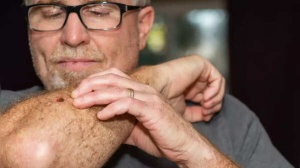In a stunning achievement, scientists have successfully bred healthy and fertile motherless mice using the DNA from two sperm cells. This breakthrough in reproductive technology bypassed the need for an egg and any female DNA, marking a significant advancement in the understanding of same-sex parenting and genetic inheritance.
 *The innovative research opens new avenues for exploring same-sex reproduction.*
*The innovative research opens new avenues for exploring same-sex reproduction.*
The motherless mice not only survived to adulthood but also demonstrated their ability to reproduce, highlighting the potential of epigenetic programming in assisted reproduction. This research, published in the journal Nature, offers compelling evidence for future possibilities in the field and could have profound implications for biomedicine.
The researchers achieved this feat through epigenetic programming, enabling them to breed healthy and fertile mice using DNA from two sperm cells. Unlike previous attempts that resulted in weak or short-lived offspring, this study produced viable pups. The technique involved targeted editing of methylation without altering the underlying DNA sequence.
Scientists have previously created mice with two biological fathers using complex genetic engineering. They overcame biological barriers using CRISPR-Cas editing to reprogram DNA methylation, enabling the birth of healthy mice. Out of 250 embryos, three pups survived, with two remaining healthy and fertile. This breakthrough highlights the crucial role of imprinting in reproduction and demonstrates that scientists have found a way to overcome obstacles in biology that were thought to be impossible to overcome.
While this discovery is groundbreaking, scientists caution against immediate applications in humans due to the low success rate, the need for numerous eggs and surrogates, and significant ethical considerations. The team is actively trying to replicate this with human cells, but there are still many challenges to overcome, especially in terms of safety and clinical application.
However, the study provides valuable insights into genomic imprinting, potentially contributing to a deeper understanding of infertility, embryo development, and animal conservation.
Newer articles
 Team India Settles in Birmingham: Rahul's Mattress, Coaches' Strolls, and the Enduring Coffee Ritual
Team India Settles in Birmingham: Rahul's Mattress, Coaches' Strolls, and the Enduring Coffee Ritual
 Android Users Urged to Patch Devices Immediately Following Critical Security Flaws Alert
Android Users Urged to Patch Devices Immediately Following Critical Security Flaws Alert
 Ashada Gupt Navratri 2025: Dates, Auspicious Timings, and Esoteric Significance Explained
Ashada Gupt Navratri 2025: Dates, Auspicious Timings, and Esoteric Significance Explained
 JPG to PDF: A Graphic Designer's Guide to Conversion & Best Practices
JPG to PDF: A Graphic Designer's Guide to Conversion & Best Practices
 Skin Cancer Alert: How to Identify Suspicious Moles and Early Warning Signs
Skin Cancer Alert: How to Identify Suspicious Moles and Early Warning Signs
 IRCTC's AskDisha 2.0: AI Chatbot Streamlines Train Ticket Booking, Refunds, and Travel Information
IRCTC's AskDisha 2.0: AI Chatbot Streamlines Train Ticket Booking, Refunds, and Travel Information
 The stat that could swing every NBA team's 2025-26 season
The stat that could swing every NBA team's 2025-26 season
 Bollywood's Mythological Muse: How Indian Epics Inspire Cinematic Storytelling
Bollywood's Mythological Muse: How Indian Epics Inspire Cinematic Storytelling
 Bollywood Flashback: Jackie Shroff Accused of Untoward Advance on Young Tabu at Danny Denzongpa's Party
Bollywood Flashback: Jackie Shroff Accused of Untoward Advance on Young Tabu at Danny Denzongpa's Party
 Popular Finance YouTuber's Account Hacked: Bitcoin Scam Alert and Security Tips
Popular Finance YouTuber's Account Hacked: Bitcoin Scam Alert and Security Tips